

CALIFORNIA/ARIZONA
March 2001

1 of 3


CALIFORNIA/ARIZONA
March 2001


1 of 3
All text copyright © Eitan Grunwald. All photographs copyright © Eitan or Ron Grunwald
except photographs by others are copyright per photo credits. All rights reserved. Terms
In May of 1999 and 2000 I took some short herping trips in North Carolina with my brother Ron. Had a great
time, and we made some good finds, but in 2001 we wanted something more. The uninitiated may not understand,
but we had the need to be where Rattlesnakes were certain to be found. So we headed west.
Peak season in California is usually April thru June, but March was the only time Ron and I could both make it.
The weather was still kinda cool so we didn’t expect to see too much. Fortunately, I hedged our bets by arranging to
connect with some California contacts. And besides, we had never been herping out west, so everything would be
new to us, no matter how little was found. We were excited!
We meet up with Brian and Brendan near San Diego for our first day in the field. Despite the chilly temps Brian
promises we’ll see Rattlesnakes that day. I expect a long trip to some remote area where such snakes can still be found
in the wild. After all, back east we have to travel deep into some parkland or rural outback for any hope of finding
these increasingly uncommon species. We head out from the parking lot of a fast food restaurant in a busy,
overdeveloped suburb. Well, 15 minutes later we do pull into a park
―
an industrial park. Ah, wilderness.
Behind the warehouses, where it’s too steep to build, are grassy slopes strewn with boards placed by herpers
hoping to lure snakes in search of cover. We string out across the hill like soldiers armed with snake hooks and begin
to check out the board line.
First honors go to Brian’s son who turns a piece of plywood and finds a young striped California Kingsnake. A
few flips later and we’re looking at a different version of the same species. The pattern on these snakes can be quite
variable, with most falling into the broad categories of Striped or Banded. Occasionally some specimens display an
irregular or broken pattern known as Aberrant.
Other boards turn up other finds, such as Ringneck Snakes, Skinks, and Fence Lizards.
These are all somewhat familiar to us because we’ve frequently found their eastern cousins, yet it’s still
interesting to see the geographic differences. For example, the back of the Western Fence Lizard looks quite similar to
the Fence Lizard of the eastern states, Sceloporus undulatus, but the blue throat and belly patches of the males are much
more pronounced in S. occidentalis.
Alligator Lizards, on the other hand, have no counterpart back home, so we we’re kind of thrilled when
practically every flip sends one of the big brown guys scurrying through the weeds. Seeing these strangers gives us
the first real sensation that we’re in foreign territory, if you don’t count our earlier discovery of Carl’s Jr. (a western
species of fast food restaurant).
.
Relocating to another industrial park we continue to hunt for rattlers. Go to the first board and Brendan flips
―
then flips out
―
while Brian whoops and shouts, “Aberrant!!”
Seems the two buddies had been hoping for some time to find one of these rare Kingsnake variations. Ron and I
just take pleasure watching them get giddy, something only fellow herpers would understand. Hey, at least it keeps
us safely off the streets. Now, back to rattlers . . . .
Brian says this time we’ll be moving down the hillside into a valley where the chaparral is thicker, preferred
habitat for the Southern Pacific Rattlesnake. He knows a board line that’s sure to produce results, and true to his
word, we don’t even have to flip to find one
―
beside the first piece of cover is a basking helleri. The next four boards
all have Rattlesnakes under them, sometimes more than one.
The whole experience is kind of strange for us. Ron and I are accustomed to thinking of Rattlesnakes as rarities,
a target that requires hard search and long travel. Even Kingsnakes are not all that common where we come from,
something you find every once in a while if you go out far enough into the country. Yet here we are surrounded by
offices, golf courses, and houses, while finding both species as backyard herps. Now I understand all those people
who dreamed of a better life in California.
The next stop is closer to the kind of herping I’ve been expecting. Drive further north to a rural stretch where
pink granite boulders dominate the landscape. We climb and wander in search of Rosy Boas and Red Diamond
Rattlesnakes hiding under the speckled rocks. Once again Brian’s son finds our first snake, a lovely Rosy with flecking
inspired by the surrounding granite. Just as it gets too dark to continue, Brian himself uncovers a Red rattler
(unfortunately, no photo) and a cute little rear-fanged (but harmless) Night Snake.
In the morning we explore another steep hillside covered in granite, and turn up two delicate lizards from
beneath the rough rocks. The Coleonyx genus is somewhat unusual because, unlike other Geckos, they possess
moveable eyelids, and they lack the clingy velcro toepads common to other Gecko species.
Don’t know if the Granite Night Lizard is unusual, but I’m enchanted by how its pattern blends in with the rocks.
The weather gets cool and we don’t find anything else, so we head east towards the desert, in hopes that warmer
temps will bring us better luck.

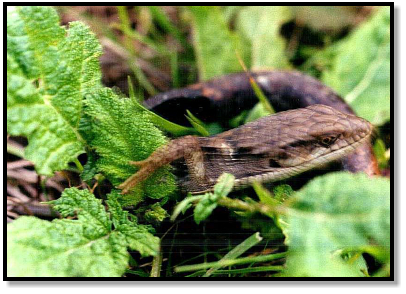
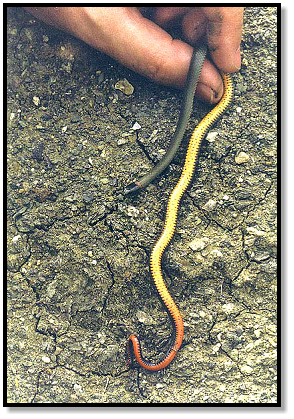
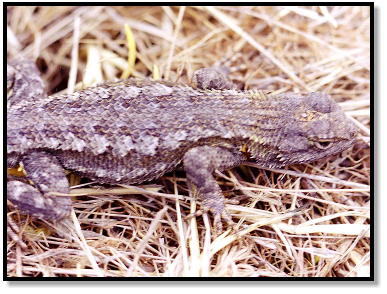
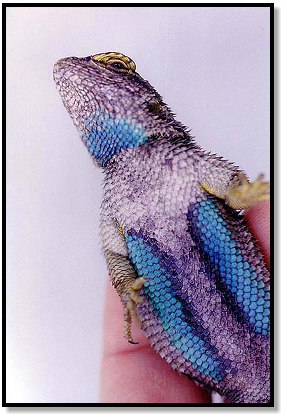
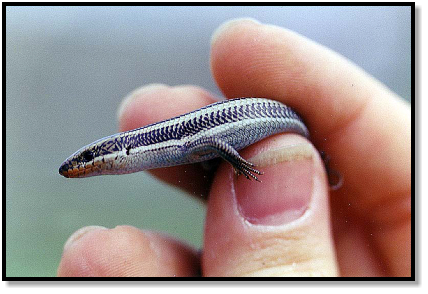
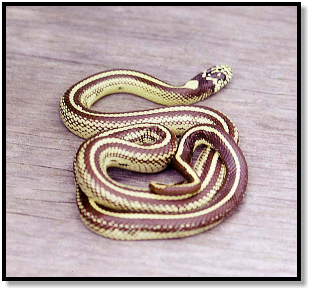

California Kingsnake
Lampropeltis getulus californiae
San Diego Ringneck Snake
Diadophis punctatus similis
Western Fence Lizard (male)
Sceloporus occidentalis
Southern Alligator Lizard
Gerrhonotus multicarinatus
Whitewater Canyon
In the transition zone from coastal mountains to desert
Granite Night Lizard
Xanatusia henshawi
Western Skink
Eumeces skiltonianus

Carl’s Jr.
Nutrimens incognita

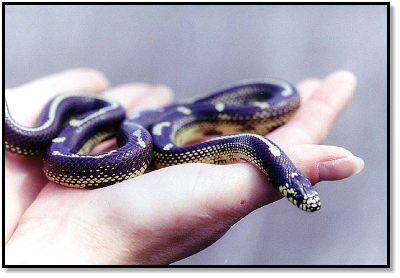
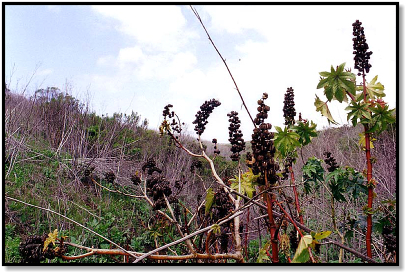
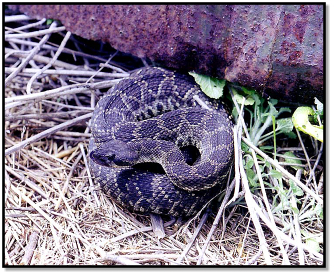
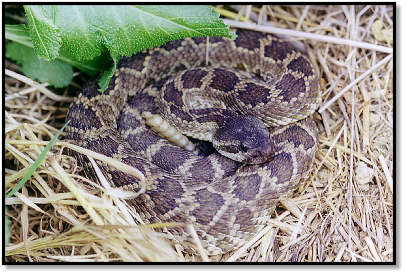
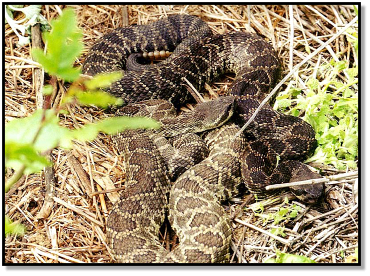
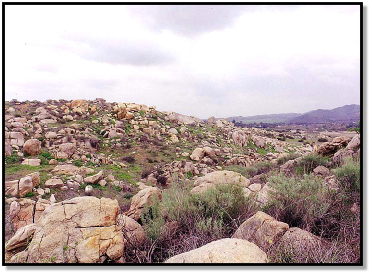
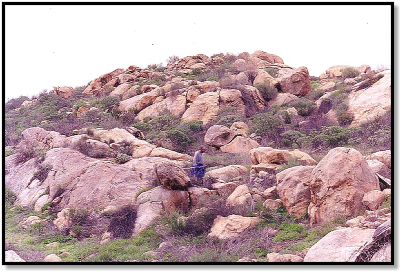

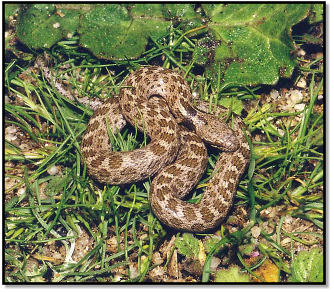
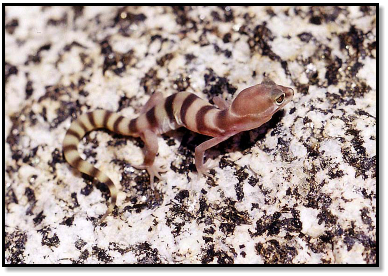
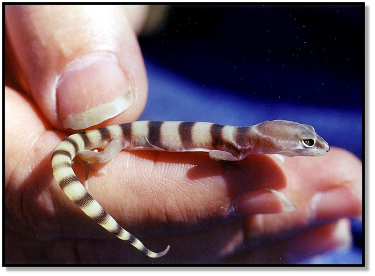
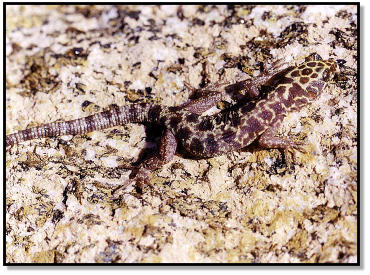
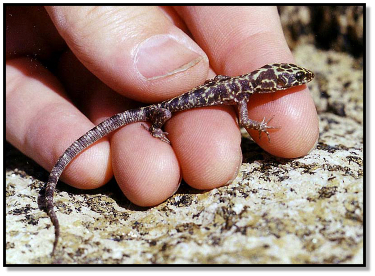
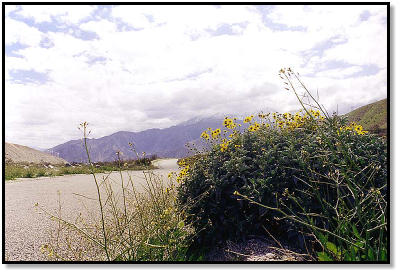
Southern Pacific Rattlesnake
Crotalus viridis helleri
Found in a vacant lot on a busy residential street.
Rosy Boa
Lichanura trivirgata
Night Snake
Hypsiglena torquata
Western Banded Gecko
Coleonyx variegatus







